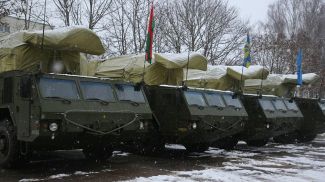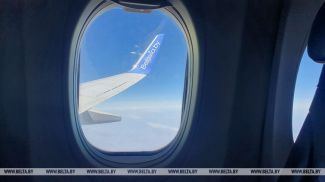
MINSK, 18 December (BelTA) - Oman's diverse landscapes, its unspoiled natural areas and at the same time well-developed tourist infrastructure provide exceptional opportunities for recreation. Oman is ready to surprise and break tourist stereotypes. Here you can swim in the clear sea, go diving and sea fishing, see mountains and waterfalls, appreciate the magic of deserts and marvel at the coolness of oases. Besides, Oman carefully preserves the cultural and historical heritage, honors customs skillfully combining them with innovations. Oman borders Saudi Arabia, UAE and Yemen, and is washed by the Arabian Sea and the Gulf of Oman. The capital and the largest city is Muscat.
Here are the TOP places to see in Oman to keep it in your heart forever.
In the city of Muscat, stone forts with watchtowers and mansions with beautiful balconies stand alongside low-rise buildings and modern architectural masterpieces, all blending together. Tourists will be charmed by museums in restored old houses, courtyard restaurants and chic shopping centers.

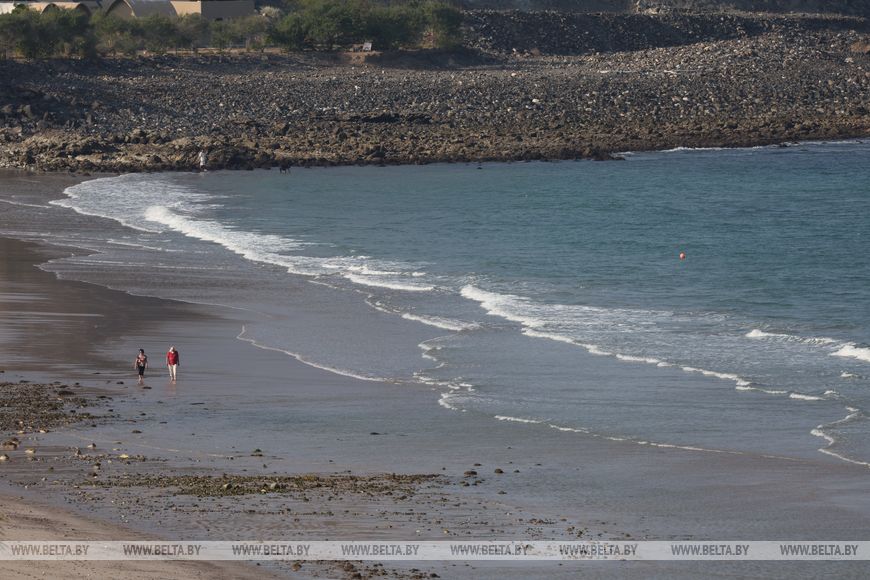


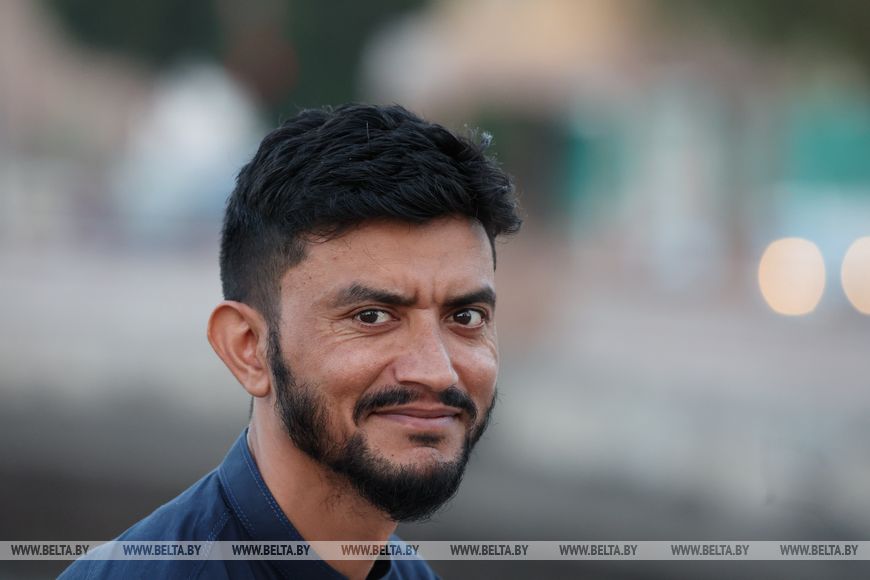




 The Sultan Qaboos Grand Mosque with its arches, colorful mosaic tiles, ornate dome and chandelier with Swarovski crystals is an impressive example of modern Islamic architecture. The floor is adorned with a unique handmade Persian carpet. This mosque is the main mosque not only in Muscat, but in the whole of Oman. It was opened quite recently, in 2001. More than 300,000 tonnes of Indian sandstone were used in the construction of the mosque.
The Sultan Qaboos Grand Mosque with its arches, colorful mosaic tiles, ornate dome and chandelier with Swarovski crystals is an impressive example of modern Islamic architecture. The floor is adorned with a unique handmade Persian carpet. This mosque is the main mosque not only in Muscat, but in the whole of Oman. It was opened quite recently, in 2001. More than 300,000 tonnes of Indian sandstone were used in the construction of the mosque. 

 The Royal Opera House in Muscat is a cultural gem in Oman and one of the most prestigious music and arts institutions in the Middle East. Since its opening in 2011, the theater has become an important center of musical and cultural life in the region. The theater hosts renowned productions from around the world. The dress code of the Royal Opera House requires suits or dinner jackets for men and conservative dress for women (no exposed shoulders or short dresses above the knees). No jeans and T-shirts are allowed.
The Royal Opera House in Muscat is a cultural gem in Oman and one of the most prestigious music and arts institutions in the Middle East. Since its opening in 2011, the theater has become an important center of musical and cultural life in the region. The theater hosts renowned productions from around the world. The dress code of the Royal Opera House requires suits or dinner jackets for men and conservative dress for women (no exposed shoulders or short dresses above the knees). No jeans and T-shirts are allowed.



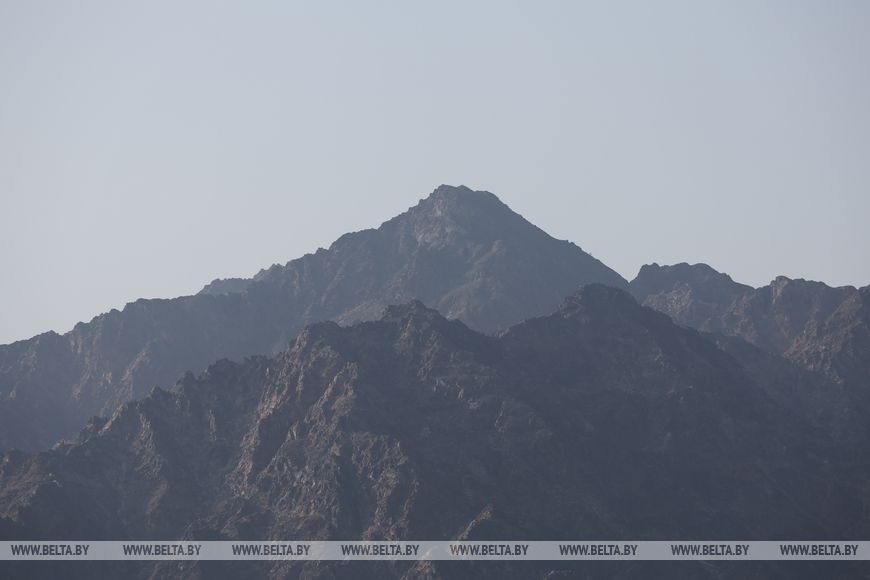 Mutrah Corniche promenade is very popular among tourists. Along the main promenade of Muscat there are pavilions where you can take a break and hide from the scorching sun, fountains, green areas, benches. The Corniche Promenade is especially lively in the evening, when the sun goes down, the heat subsides and people come out to enjoy the beautiful views of the Omani capital.
Mutrah Corniche promenade is very popular among tourists. Along the main promenade of Muscat there are pavilions where you can take a break and hide from the scorching sun, fountains, green areas, benches. The Corniche Promenade is especially lively in the evening, when the sun goes down, the heat subsides and people come out to enjoy the beautiful views of the Omani capital.
Muttrah Market is one of the most important and historical places in Oman. It is the center of commercial activity and social life of the country. Here you can buy any kind of souvenirs, from incense to expensive antique products. The market also sells sandalwood products, gold, silver and much more. 
 Here, richly decorated khanjars (traditional daggers) and patterned kummahs (headdresses) demonstrate the excellent skill of their makers.
Here, richly decorated khanjars (traditional daggers) and patterned kummahs (headdresses) demonstrate the excellent skill of their makers.
Bahla Fort
The oasis town of Bahla is also an interesting destination. The town is located in the Ad Dakhiliyah Governorate about 180km south of the capital Muscat in the foothills of the Jebel Akhdar Mountains. It has a mud brick town wall 12km long and 5m high.
The main attraction is the old fort built on the Jebel Akhdar plateau. Bahla Fort is a UNESCO World Heritage site. It is called a unique example of a fortified oasis settlement and the oldest citadel in Oman.
The fort complex was built between the 12th and 15th centuries by the Banu Nebhan tribe and later expanded by ruling dynasties. It features wind towers, mosques, houses and wells. It is believed that the tribe asked jinn (powerful spirits in pre-Islamic Arabic mythology) to build the fort in one night when enemies wanted to attack the tribe. The fort offers a beautiful view of old mud houses in a village surrounded by date plantations.
Bahla is also famous for pottery made in clay kilns. At Bahla's old souq tourists can find pottery, handicrafts, carpets and other goods and also see potters at work in a workshop nearby.
Jabrin Castle of the 17th century is a short drive from the town. The west side of the castle offers a breathtaking view on the entire palm oasis.
The Musandam Peninsula is the northern-most part of Oman and one of the most beautiful places in the Middle East. It is called the Norway of Arabia due to its unique fjord-like inlets.
From here you can see the majestic landscape of the jagged peaks of the Hajar Mountains rising out of the sea with narrow bays between them. During a cruise on a traditional wooden boat called dhow, tourists can see dolphins or whales.
Cruise liners often stop at the Musandam port located in the town of Khasab. Local hotels welcome fishermen, divers and off-road mountain safari enthusiasts.
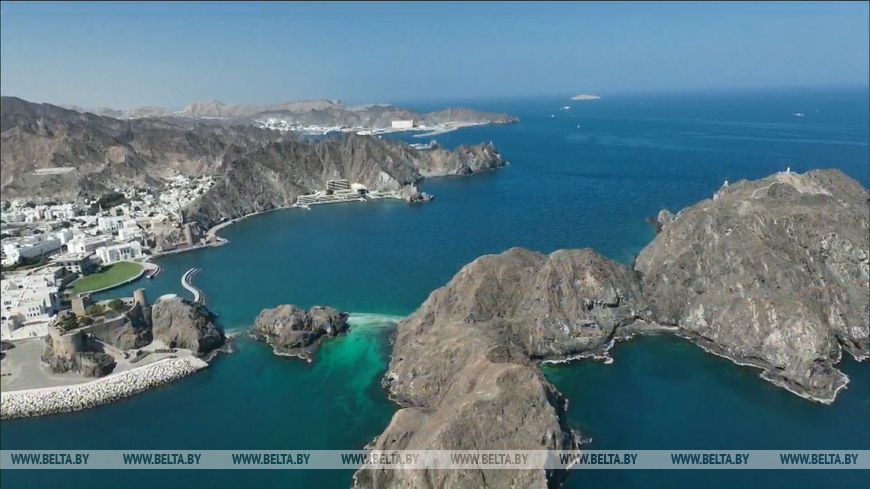
Khasab is home to Jebel Al Harim mountain known as the the Mountain Of Women and sandy beaches.
History buffs will enjoy hiking in the Musandam Mountains and visiting abandoned towns near Khasab.
Coastal city of Salalah and Al Mughsail Beach
The Khareef monsoon from the Indian Ocean affects the weather in the city of Salalah from late June to early September. The city blooms into lush greenery. The mild weather conditions make it one of the best places to visit in Oman in summer. Temperatures in other parts of the country may soar to over 40°C during the hottest days. This coastal city is a great start to further journey through the Dhofar region.
During the trip around Salalah, you can stop at Al Hosn Palace to take photos and then head to Al Hosn souq to enjoy the scents of spices and frankincense.
 The stunning beaches of Salalah offer plenty of snorkeling and diving options. Al Mughsail white sandy beach is particularly famous. Here you can see how streams of seawater rush out of the Mughsail blowholes. These wonders of nature occur because of underground caves connected to the sea. When the waves crash, the water is thrown upwards through the blowhole, creating an impressive spectacle of water jets up to 30 meters high.
The stunning beaches of Salalah offer plenty of snorkeling and diving options. Al Mughsail white sandy beach is particularly famous. Here you can see how streams of seawater rush out of the Mughsail blowholes. These wonders of nature occur because of underground caves connected to the sea. When the waves crash, the water is thrown upwards through the blowhole, creating an impressive spectacle of water jets up to 30 meters high.
Salalah hosts the annual Khareef festival, which includes cultural performances, traditional crafts and local delicacies.
Dhofar region is also steeped in a rich heritage of frankincense production, an aromatic gum resin that has been used for perfumes, medicines and religious rituals for thousands of years. Dhofar was the center of frankincense production.
You can visit the Wadi Dawkah, a natural park with hundreds of frankincense trees (Boswellia sacra) from which the gum resin is still extracted. The ruins of medieval towns at the archaeological sites of Khor Rori, Al-Baleed and Ubar (known as the Land of Frankincense) narrate the stories of caravans and settlements that sold frankincense. They are included in the UNESCO World Heritage Site List.
City of Sohar
Sohar is a delightful blend of rich history, culture, and modern attractions. The city features huge shopping centers, skyscrapers, some of the most magnificent beaches in Oman, souks and historical monuments.
Sohar Fort is perched atop a hill. It is one of the main attractions of the city.
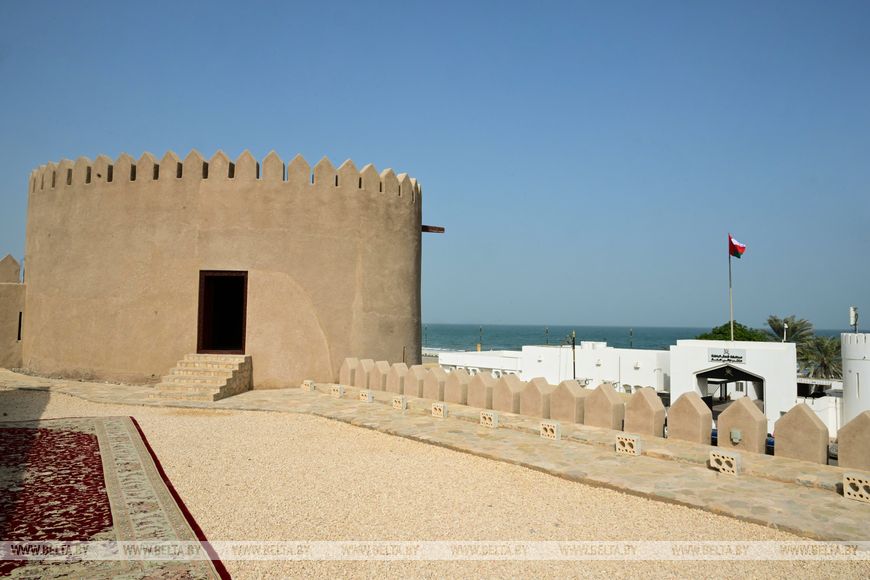
Sohar Handicrafts souq is a traditional market known for its rich history and cultural heritage. Here you can buy the most beautiful souvenirs and a lot of traditional jewelry.
A short drive to the outskirts of the city will take you to beautiful deserts. There is plenty to do in Sohar, whether it’s watching camel races, buying traditional handicrafts or simply exploring gorgeous beaches.
Sohar is referred to as the historical home of the fairytale character Sinbad the Sailor.



In spring Jebel Akhdar is covered with damask roses. Distilled rose water is used in cooking and as a flavoring agent.
In addition to its natural and cultural attractions the Wahiba Sands boasts hidden oases and desert flora and fauna. Excursions to the Wahiba Sands often include a visit to these oases where freshwater pools and lush date palm groves contrast sharply with the surrounding arid landscape.
Here are the TOP places to see in Oman to keep it in your heart forever.
The city of Muscat and its gems
Oman's vibrant cultural heritage is closely intertwined with its terrain and permeates every journey in this country, the country's history is felt everywhere, travel sources note.










 The Sultan Qaboos Grand Mosque with its arches, colorful mosaic tiles, ornate dome and chandelier with Swarovski crystals is an impressive example of modern Islamic architecture. The floor is adorned with a unique handmade Persian carpet. This mosque is the main mosque not only in Muscat, but in the whole of Oman. It was opened quite recently, in 2001. More than 300,000 tonnes of Indian sandstone were used in the construction of the mosque.
The Sultan Qaboos Grand Mosque with its arches, colorful mosaic tiles, ornate dome and chandelier with Swarovski crystals is an impressive example of modern Islamic architecture. The floor is adorned with a unique handmade Persian carpet. This mosque is the main mosque not only in Muscat, but in the whole of Oman. It was opened quite recently, in 2001. More than 300,000 tonnes of Indian sandstone were used in the construction of the mosque. 

 The Royal Opera House in Muscat is a cultural gem in Oman and one of the most prestigious music and arts institutions in the Middle East. Since its opening in 2011, the theater has become an important center of musical and cultural life in the region. The theater hosts renowned productions from around the world. The dress code of the Royal Opera House requires suits or dinner jackets for men and conservative dress for women (no exposed shoulders or short dresses above the knees). No jeans and T-shirts are allowed.
The Royal Opera House in Muscat is a cultural gem in Oman and one of the most prestigious music and arts institutions in the Middle East. Since its opening in 2011, the theater has become an important center of musical and cultural life in the region. The theater hosts renowned productions from around the world. The dress code of the Royal Opera House requires suits or dinner jackets for men and conservative dress for women (no exposed shoulders or short dresses above the knees). No jeans and T-shirts are allowed. 


 Mutrah Corniche promenade is very popular among tourists. Along the main promenade of Muscat there are pavilions where you can take a break and hide from the scorching sun, fountains, green areas, benches. The Corniche Promenade is especially lively in the evening, when the sun goes down, the heat subsides and people come out to enjoy the beautiful views of the Omani capital.
Mutrah Corniche promenade is very popular among tourists. Along the main promenade of Muscat there are pavilions where you can take a break and hide from the scorching sun, fountains, green areas, benches. The Corniche Promenade is especially lively in the evening, when the sun goes down, the heat subsides and people come out to enjoy the beautiful views of the Omani capital. Muttrah Market
The atmospheric lanes of Muttrah Market in Muscat leave a vivid impression.

 Here, richly decorated khanjars (traditional daggers) and patterned kummahs (headdresses) demonstrate the excellent skill of their makers.
Here, richly decorated khanjars (traditional daggers) and patterned kummahs (headdresses) demonstrate the excellent skill of their makers.Bahla Fort
The oasis town of Bahla is also an interesting destination. The town is located in the Ad Dakhiliyah Governorate about 180km south of the capital Muscat in the foothills of the Jebel Akhdar Mountains. It has a mud brick town wall 12km long and 5m high.
The main attraction is the old fort built on the Jebel Akhdar plateau. Bahla Fort is a UNESCO World Heritage site. It is called a unique example of a fortified oasis settlement and the oldest citadel in Oman.
The fort complex was built between the 12th and 15th centuries by the Banu Nebhan tribe and later expanded by ruling dynasties. It features wind towers, mosques, houses and wells. It is believed that the tribe asked jinn (powerful spirits in pre-Islamic Arabic mythology) to build the fort in one night when enemies wanted to attack the tribe. The fort offers a beautiful view of old mud houses in a village surrounded by date plantations.
Bahla is also famous for pottery made in clay kilns. At Bahla's old souq tourists can find pottery, handicrafts, carpets and other goods and also see potters at work in a workshop nearby.
Jabrin Castle of the 17th century is a short drive from the town. The west side of the castle offers a breathtaking view on the entire palm oasis.
Musandam Peninsula: Fjords of Arabia
From here you can see the majestic landscape of the jagged peaks of the Hajar Mountains rising out of the sea with narrow bays between them. During a cruise on a traditional wooden boat called dhow, tourists can see dolphins or whales.
Cruise liners often stop at the Musandam port located in the town of Khasab. Local hotels welcome fishermen, divers and off-road mountain safari enthusiasts.

Khasab is home to Jebel Al Harim mountain known as the the Mountain Of Women and sandy beaches.
History buffs will enjoy hiking in the Musandam Mountains and visiting abandoned towns near Khasab.
Coastal city of Salalah and Al Mughsail Beach
The Khareef monsoon from the Indian Ocean affects the weather in the city of Salalah from late June to early September. The city blooms into lush greenery. The mild weather conditions make it one of the best places to visit in Oman in summer. Temperatures in other parts of the country may soar to over 40°C during the hottest days. This coastal city is a great start to further journey through the Dhofar region.
During the trip around Salalah, you can stop at Al Hosn Palace to take photos and then head to Al Hosn souq to enjoy the scents of spices and frankincense.

 The stunning beaches of Salalah offer plenty of snorkeling and diving options. Al Mughsail white sandy beach is particularly famous. Here you can see how streams of seawater rush out of the Mughsail blowholes. These wonders of nature occur because of underground caves connected to the sea. When the waves crash, the water is thrown upwards through the blowhole, creating an impressive spectacle of water jets up to 30 meters high.
The stunning beaches of Salalah offer plenty of snorkeling and diving options. Al Mughsail white sandy beach is particularly famous. Here you can see how streams of seawater rush out of the Mughsail blowholes. These wonders of nature occur because of underground caves connected to the sea. When the waves crash, the water is thrown upwards through the blowhole, creating an impressive spectacle of water jets up to 30 meters high.The surrounding area features natural springs and wadis (valleys). In Wadi Darbat you can see a waterfall or take a boat trip on the lake.
Dhofar region is also steeped in a rich heritage of frankincense production, an aromatic gum resin that has been used for perfumes, medicines and religious rituals for thousands of years. Dhofar was the center of frankincense production.
You can visit the Wadi Dawkah, a natural park with hundreds of frankincense trees (Boswellia sacra) from which the gum resin is still extracted. The ruins of medieval towns at the archaeological sites of Khor Rori, Al-Baleed and Ubar (known as the Land of Frankincense) narrate the stories of caravans and settlements that sold frankincense. They are included in the UNESCO World Heritage Site List.
City of Sohar
Sohar is a delightful blend of rich history, culture, and modern attractions. The city features huge shopping centers, skyscrapers, some of the most magnificent beaches in Oman, souks and historical monuments.
Sohar Fort is perched atop a hill. It is one of the main attractions of the city.

Sohar Handicrafts souq is a traditional market known for its rich history and cultural heritage. Here you can buy the most beautiful souvenirs and a lot of traditional jewelry.
A short drive to the outskirts of the city will take you to beautiful deserts. There is plenty to do in Sohar, whether it’s watching camel races, buying traditional handicrafts or simply exploring gorgeous beaches.
Sohar is referred to as the historical home of the fairytale character Sinbad the Sailor.




The historic city of Nizwa
The city of Nizwa was Oman’s capital in the 6th and 7th centuries. The city is full of mosque domes and minarets that rise above sand-colored buildings. It is located on a plain surrounded by date palms, banana plantations and some of Oman’s highest mountains.
The historic city of Nizwa is known as the “Pearl of Islam”. The ancient city was once a center of trade, education, religion, and art. Nizwa is a versatile city with many historical and agricultural attractions.
Built in the 17th century, the imposing Nizwa Fort dominates the city. This massive fort with its cylindrical tower offers panoramic views of the surrounding oasis of date palms and the Hajar Mountains. Next to the fort is the Nizwa Market, one of the oldest and busiest marketplaces in Oman. It is an atmospheric place with spice stalls, intricate silver jewelry, and vendors selling fresh produce and traditional Omani sweets.
Surrounding Nizwa is the stunning scenery of the Hajar Mountains. The nearby mountain range Jebel Akhdar is a popular hiking destination with its orchards, rose gardens, and breathtaking views.
A 10-minute drive away is Falaj Daris Park, a UNESCO World Heritage site. Here you can see the falaj canal, which is an ancient but very efficient method of irrigation. It irrigates the 8-kilometer palm oasis of Nizwa and the surrounding agricultural farms.
The mountain plateau Jebel Akhdar is one of the coolest places
At an altitude of 2,980 meters in the Hajar Mountains is the mountain plateau Jebel Akhdar (Green Mountain). It is one of the coolest places, with temperatures about 15C lower than in Muscat all year round. The mountain even gets snow in winter.
Around Jebel Akhdar are quiet Omani villages, slopes covered with farm buildings and irrigated by falaj canals, and orchards full of pomegranates, peaches, apples, apricots, and walnuts.
Jebal Shams in the Hajar Mountains is the highest point of the country (3,009 meters). Travelers can adventure through the canyons Wadi Ghul and Wadi Nahr, which are surrounded by rough limestone walls.
Wahiba sands and undulating desert dunes
No trip to Oman would be complete without a visit to the desert. In Wahiba Sands you'll be surrounded by undulating dunes. Some of them can be as high as 100 meters.
Although Bedouins still live and work here (many as guides), the Wahiba Sands are also popular with local families and tourists. Visitors come for a day trip or to stay overnight in one of the many camps, which offer varying levels of luxury and amenities. Staying overnight allows you to experience the silence of the desert after the one-day trippers have departed, take part in Bedouin campfire rituals, enjoy traditional meals and stargaze in one of the most pristine landscapes in the region.
The most popular activities in the Wahiba Sands are dune riding and camel safaris. There are also many activities for children such as sandboarding (snowboarding on sand dunes) and horseback safaris.




